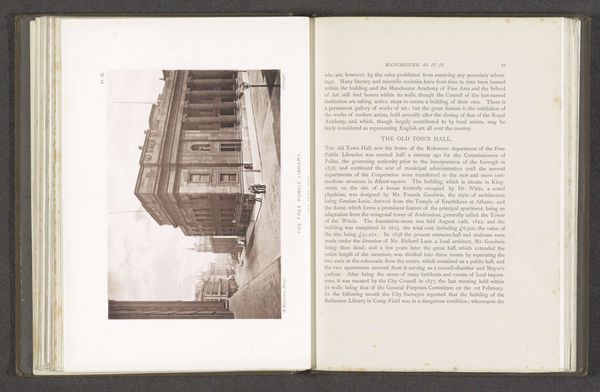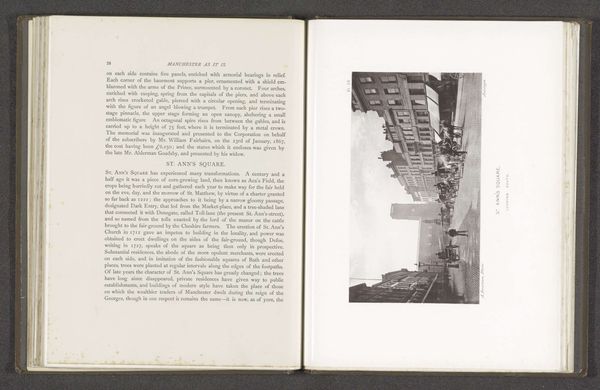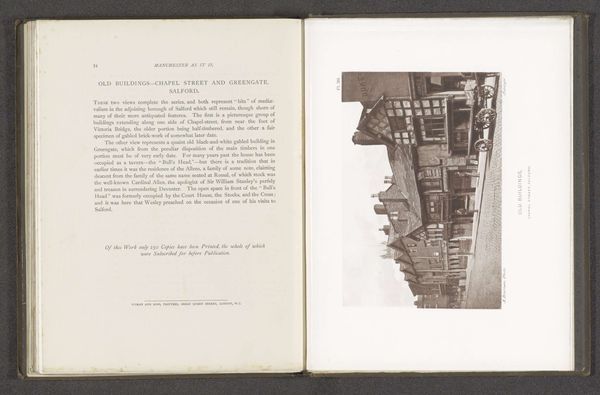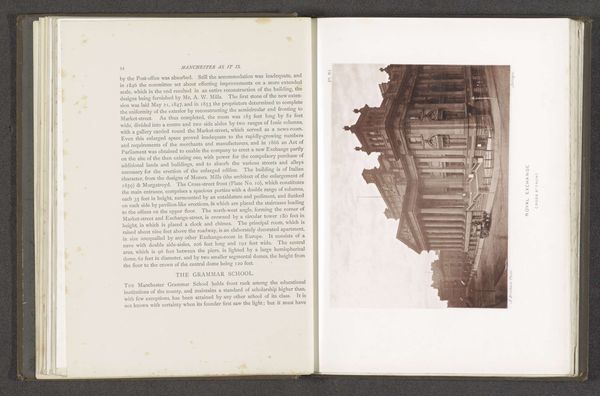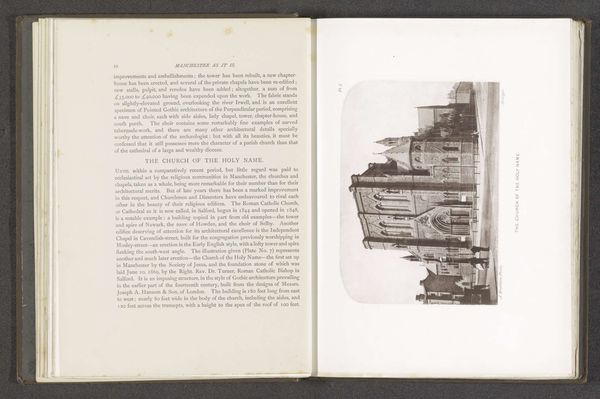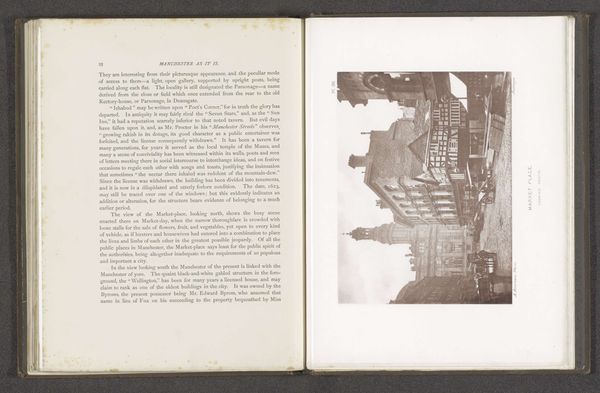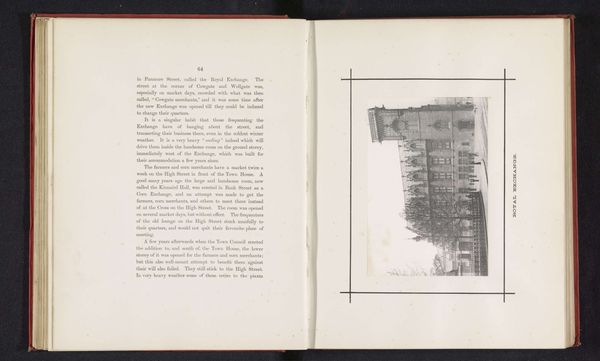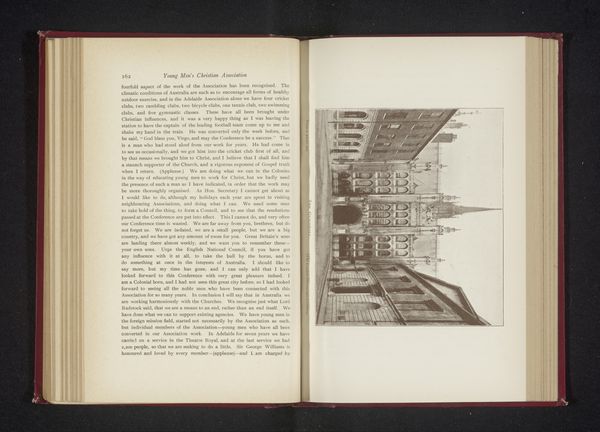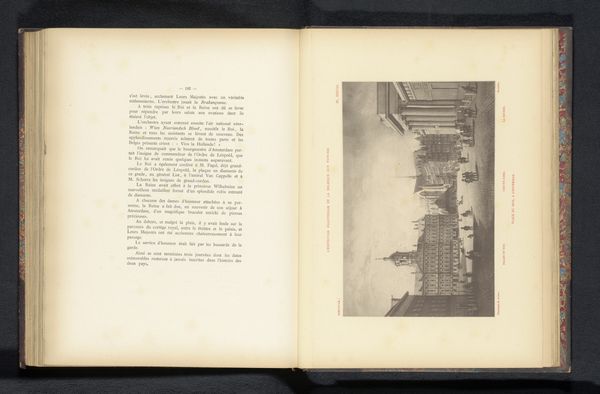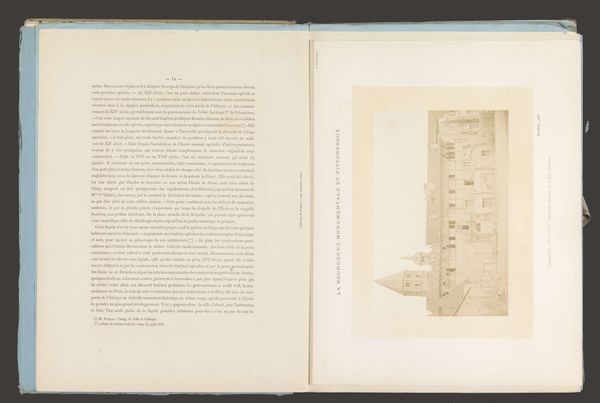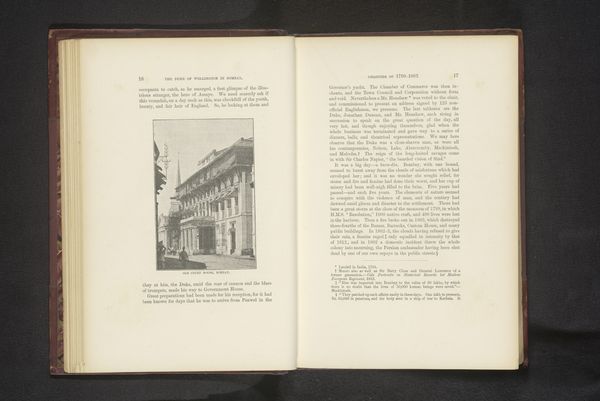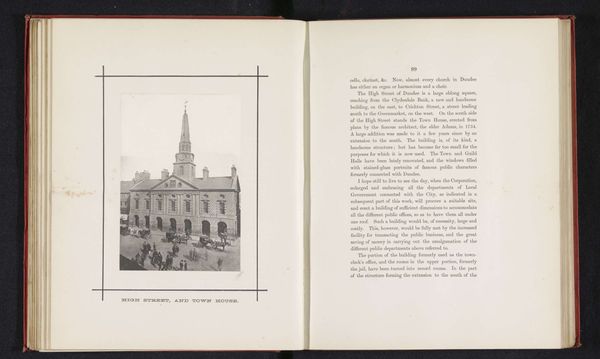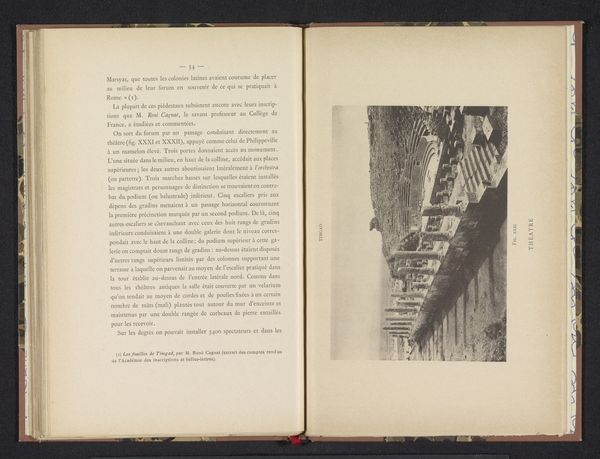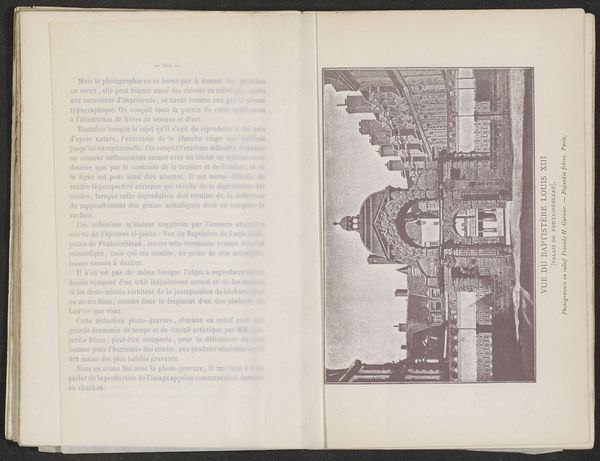
#
aged paper
#
script typography
#
paperlike
#
book design
#
sketch book
#
personal journal design
#
book mockup
#
thick font
#
publication mockup
#
building
#
publication design
Dimensions: height 145 mm, width 183 mm
Copyright: Rijks Museum: Open Domain
Curator: The faded sepia tones give this photograph, "Façade van de Conservative Club in Manchester," a sense of solemnity. The building seems to emerge from the past, captured before 1878 by Alfred Brothers. Editor: It certainly has a presence. There's something undeniably imposing about it, yet also…vulnerable. Like a monument already touched by time, showing its age. Curator: Note how the architecture conveys that establishment power—the heavy cornices, the repeating rows of windows like watchful eyes. The Conservative Club as a visual representation of enduring ideology. What meanings were woven into its design, I wonder? Editor: Given that the club opened in 1871, you have to consider it as part of the larger Victorian context—the rapid industrialisation, the growth of class divides. Clubs like this served as social and political powerhouses, exclusionary spaces built to maintain a certain status quo. This image, viewed through that lens, reflects social inequality. Curator: Yes, buildings do speak volumes. But there's a deeper resonance here. Even without knowing its precise history, the architectural language resonates with symbols of permanence. It's intended to evoke the legacy of stability and established values. I find its symbolism quite striking in its intent to communicate importance. Editor: But that perceived permanence is always a fiction, isn’t it? History demonstrates that such spaces and ideologies shift and evolve. A photograph like this prompts us to critically examine who these spaces were for, and at whose expense that supposed stability was built. Curator: True, and that tension between aspiration and reality is what makes it so compelling. This image acts as a cultural artifact. The artist Alfred Brothers presents this location to us and we now look back at them looking forward into their future. Editor: Exactly. By reflecting on its history and its impact we acknowledge, not just architectural merit, but also the shifting sands of power, race, gender, and identity. Thank you for exploring this interesting perspective. Curator: My pleasure. And thank you, as well, for sharing your historical lens that gives us more perspective.
Comments
No comments
Be the first to comment and join the conversation on the ultimate creative platform.
